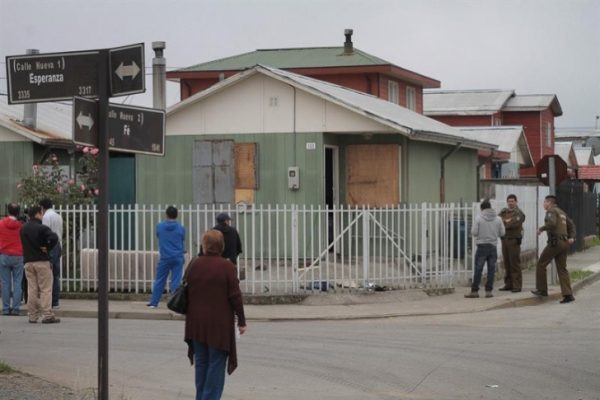Colombian Motel Faces Criticism for Helping Cheating Husband Hide from His Wife

A motel in Bucaramanga, Colombia, has come under fire for helping an unfaithful husband hide from his wife who was waiting outside for him, and later using the story to promote itself on social media. Motel Palmeiras has been facing a lot of criticism online for encouraging adultery by going out of its way to help […]
Man Shocks Family by Showing Up at His Own Wake

A 20-year-old man in Paraguay recently gave his family and friends the shock of their lives when he returned home after three days to find them all grieving over what was supposed to be his dead body. Juan Ramón Alfonso Penayo, from the village of Santa Teresa, close to Paraguay’s border with Brazil, had last […]
Farmer Buries His Faithful Truck After 48 Years of Service

Alcides Ravel, a farmer from Uruguay, bought his Ford F-350 in 1969, when he was 35 years old. Recently, the 83-year-old man finally put his faithful vehicle to eternal rest, after 48 years of service, by burying it on his farm. For most people, trucks are mere tools to be used and sold when they outlive […]
Peruvian Family Claims Possessed Doll Has Been Terrorizing Them for Years

A seemingly harmless doll has been dubbed the “Peruvian Annabelle” after the family that owns it claimed that they have been terrorized by it for the last seven years. In a YouTube video that recently went viral, the Nunez family, in Callao, Peru, explain that they have witnessed various paranormal events connected to “Sarita”, a blonde, […]
Chilean Police Report Paranormal Activity While Investigating Domestic Disturbance

People report cases of paranormal activity somewhere around the world virtually every day, but it’s not often that you hear police officers actually confirming these occurrences. However, that’s exactly what happened a couple of days ago in a Chilean city, when police investigating a domestic disturbance were allegedly attacked by mysterious forces. On February 26, […]
Brazilian Drug Lord Turns Prison Cell into Luxurious Suite
Jarvis Chimenes Pavao, considered one of the most dangerous drug traffickers in South America, was serving an 8-year sentence in Tacumbu Prison, when police raided his cell to find it was actually a luxury suite. Pavao was due to complete his sentence for money laundering next year, at which point he was likely to face […]
Mysterious Boiling River in Peru is So Hot It Boils Animals Alive
There is a mysterious river flowing deep through the Amazon rainforest in Mayantuyacu, Peru, that can literally boil small animals almost instantly. While water temperatures along the 6.4-km-long river range between 50 and 90 degrees Celsius, in some parts almost reaching the boiling point of 100 degrees. That’s hot enough to cause third-degree burns in a matter of […]
The Brutal Colombian Prison Where Inmates Carry Firearms but Guards Do Not
La Modelo prison in Botogá, Colombia, is notorious for the free reign that its 11,000 odd inmates enjoy. The prisoners completely run the show, with easy access to guns and grenades, while the prison guards do not carry any weapons inside the premises. The inmates frequently resort to violence in order to settle disputes between […]
La Colonia Tovar – A Picturesque German Alpine Village in Venezuela
Venezuela is one of the last places you would expect to find a picturesque German alpine village, and yet… La Colonia Tovar, also known as ‘The Germany of the Caribbean’, is conspicuous for its white houses with timbers and red roofs surrounded by flower gardens, carefully tended fields and creeks with water mills, and its hearty German […]
Controversial ‘Wall of Shame’ in Peru Separates the Rich from the Poor
Everyone talks about the gap between the rich and poor, bit nowhere is this barrier more clear than Lima Peru, where a 10-kilometer concrete wall topped with barbed wire separates one of the cities richest communities from one of the poorest. Located on the outskirts of Lima, the Wall of Shame’, also nicknamed ‘Peru’s Berlin Wall’, […]
“Baby” Conman Wore Diapers and Suckled on Lollipops to Trick Women He Was a Lost Overgrown Child

Alberto Julian Meza, a strange South American con man, was arrested recently in Paraguay for tricking people into believing that he was a lost, overgrown child. The 25-year-old mainly targeted older women – he dressed up in nappies and sucked on lollipops, pretending that he was lost and searching for his mummy. Believe it or […]
The Village of Forgetfulness – Colombian Village Is Home to the World’s Largest Population of Alzheimer’s Sufferers

At the outset, the mountainous region of Antioquia in northwestern Colombia comes across as a breathtaking natural paradise. But its picturesque valleys and winding green hills hide a chilling secret – an unusually large number of young people here suffer from a hereditary form of Alzheimer’s. Several of Antioquia’s residents are at various stages of the […]
Riding a Swing on the Edge of a Cliff in Ecuador

It’s called the Swing at the End of the World and it could literally be the end of you, as this extreme attraction in the mountains of Ecuador lets thrill-seekers swing over an abyss without any safety measures whatsoever. Hiking up the path to Bellavista from the edge of Baños, Ecuador, you reach a viewpoint […]
Mysterious Condition Causes Girl to Cry Tears of Blood

20-year-old Yaritza Oliva is living a nightmare. For the last couple of weeks the girl from Purranque, Chile, has been crying tears of blood and so far no one has been able to explain her mysterious condition. Yaritza first noticed blood tears coming out of her eyes about two weeks ago, but due to her family’s […]
The Guinea Pig Festival of Huacho Has Rodents on the Menu

It’s funny how a cute and furry pet in one part of the world can be considered a delicacy in another. But that’s exactly what guinea pigs are in the small town of Huacho in Peru. In fact, they have a whole festival dedicated to dressing up and cooking the hairy rodents – The Festival […]
